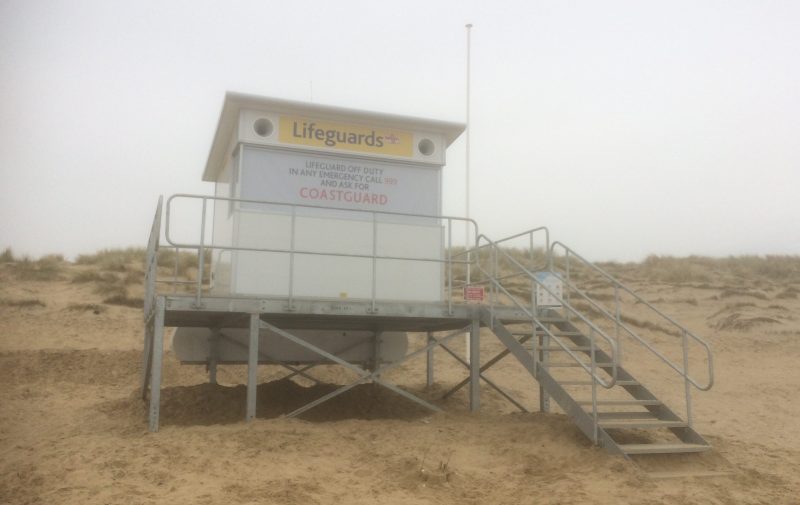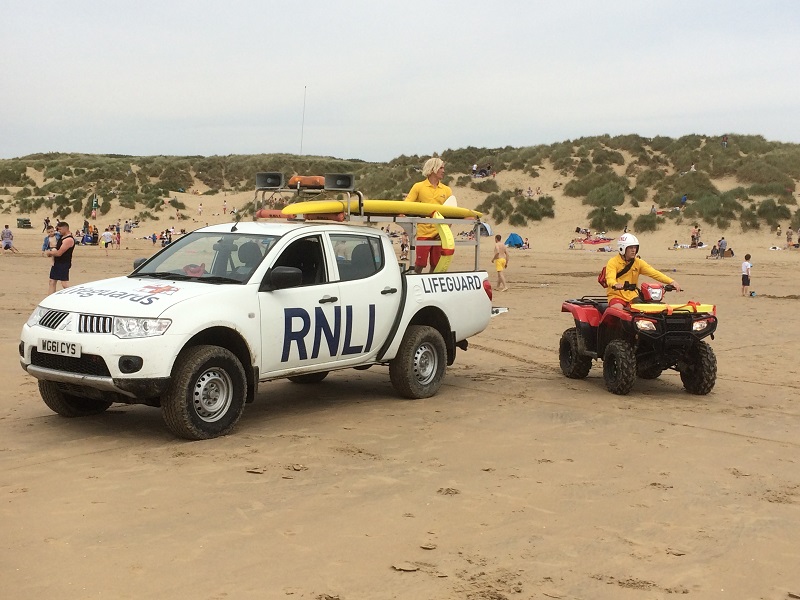BBC South East Today reported on Monday night, April 22, that between 15,000 and 20,000 people can turn up on Camber Sands on a single day and they showed film of the lifeguards and their vehicles on the wide sands at low tide.
However when I walked along the beach on Sunday around lunchtime it was high tide and people were crammed so close that I often had to wade through the sea to get past them as both the beach, and the dunes behind, were jam packed.
So there were probably thousands on the beach, but it could have been worse. Buses were still getting through, and the police were not turning back cars – except when an accident happened.
But I had walked in from Rye via the river mouth and entrances to (and sections of) the beach started off with a sign marked A.

And the beach was already quite full by the time I got to C and the first lifeboat station – which was empty and not in use.
And it took me another 10 to 15 minutes to work my way along the beach to the G sign by the central car park.
Here the lifeboat station was manned (by I think five lifeguards with their vehicle nearby surrounded by people sitting down, sunbathing, eating or building sandcastles), and there were supposed to be lifeguards on duty for all four days of the Easter weekend.
And indeed they were on duty, on the balcony looking at the crowd. And behind them in the car park there was a South East Coast ambulance, a police truck, the Rother District Council’s coastal officer’s vehicle, and a Coastguard Search and Rescue vehicle.
Also in the car park, by the lavatories, there were two small offices – one for the police and one for Rother. But, though I checked out a couple of tents on the beach, there was no sign of Rother’s usual beach patrol on the actual beach, and a number of people who asked me for information/advice/help as I walked along the edge of the packed beach were clearly first-time visitors and had no knowledge of what facilities were on the beach.
Walking along with a notebook in my hand, I discovered, was a mistake, as I was assumed to be either a local or someone “official”.
However a short way past the lifeboat station (after threading my way through the crowd) I found a small tractor with a trailer on which there was a small jet ski, probably used for rescue purposes – but there was no sign it was in use, or had been in action.
My experience of other British beaches though (and indeed some foreign ones as a travel writer for a couple of years) is that when they are so crowded that even those on foot cannot get through (let alone a vehicle) one or more lifeguards are stationed out to sea – in a boat, on a jet ski or at least on a surf board – watching out for people in trouble, and from a point where they could see more of the beach are helpful.
Frankly (even with binoculars) it is hard to see the length of Camber beach from the middle, let alone any detail, as it just looked like a dark, heaving mass of people.
And the beach was so packed it was hard to see much detail beyond a few yards away – let alone a fight or someone needing help – and, while the lifeguards are trained to run, walking or wading was hard enough.
But this was their first weekend – and maybe the crowd came as rather a shock. However, at high tide, I did wonder what they could actually see – or do.
Image Credits: Rye News library , Kevin McCarthy .



